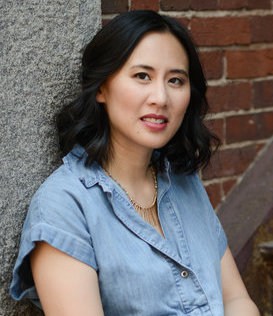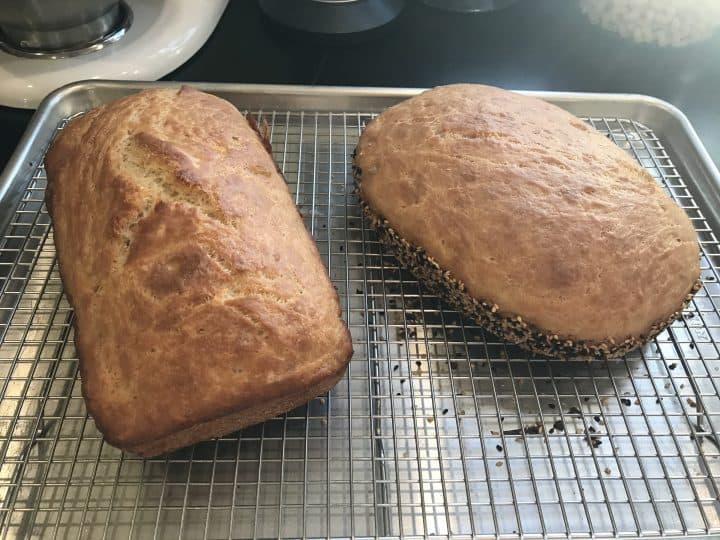Writers Who Cook: Alexandra’s Mother’s Peasant Bread with Celeste Ng
In uncertain times, it can be comforting to honor the rituals that have nourished and grounded us over the years. And with so many people cooking at home these days, we thought we’d ask some of the writers in our communities to share favorite recipes and the stories behind them. We hope these recipes provide you with some inspiration, comfort, and company in your own home kitchen. If you’re a writer who cooks and would like to be featured in our series, please reach out to [email protected].
Today’s recipe comes from Celeste Ng, author of Everything I Never Told You and Little Fires Everywhere.

Photo by Kevin Day
When I’m feeling stressed, I often go into the kitchen to bake something. When my nine-year-old has a say, it’s cookies or cupcakes, but the most comforting thing to bake, in my experience, is bread. Most often, it’s this bread from the cooking blog “Alexandra’s Kitchen,” which she calls “My Mother’s Best, Easiest Peasant Bread.” I don’t know Alexandra personally, nor her mother, but their recipe has become a cherished part of my family’s life.
This is my favorite bread because it’s ridiculously easy—extremely important in comfort baking—yet it comes out well every time, so I feel very capable and dexterous when I’m done. There is no kneading, and you start with little more than flour and water, but in a few hours you have a hot loaf of bread with a toasty, buttery crust that will make your entire apartment smell divine (fair warning, this smell will lure everyone else to the kitchen, so you will probably have to share).
You start by dissolving the sandy little grains of yeast with some sugar and water just a bit warmer than your hand. It will look like nothing is happening, but in about 15 minutes, you will have a bowl full of fluffy, toffee-colored foam, which means the yeast is awake and ready.
Then, you stir in flour and salt, cover the bowl with a towel, and set it somewhere warmish, as if you’re putting a swaddled baby down for a nap. When you come back an hour or two later, magic has occurred: The dough will have swelled into a pale, tantalizingly tender dome. Your fingertips will leave little round dimples in the surface, and it will be the softest thing you’ve ever touched.
You squish it down—you can stir it like pancake batter or punch it with your fist, depending on how much stress you need to relieve—and then tip it into a buttered pan and turn on the oven. By the time the oven is hot, the bread is ready to go in, and half an hour later, it will be crowning proudly over the top of the pan and a beautiful, burnished-golden brown all over. If you’re anything like me, you will feel incredibly accomplished at this point, even though most of what you did was measure, stir, and wait. You will also feel very hungry.
Technically, you should let a loaf cool completely before you slice, but I have never managed to wait that long and routinely burn my tongue, but I’m never sorry. It’s delicious with butter or with jam, and it’s easily variable (mix in herbs, dukkah, everything bagel seasoning, whatever you like). But my favorite way to eat it is just as it is—the crust is my favorite part, and I will fight you for the heel piece. After the first day, toast slices of the loaf, and the crust will crisp up almost as good as fresh from the oven.
I have taken this bread to dinner parties, and everyone always marvels at how good it is. And just as Alexandra says in her blog post, I tell them how easy it is to make and promise to send them the recipe. Consider this our virtual dinner party; here is the recipe. Go forth and bake.
Alexandra’s Mother’s Peasant Bread
View the recipe at Alexandra’s Kitchen.

Peasant bread from Celeste Ng’s own kitchen. Photo by Celeste Ng
Celeste Ng is the author of two novels, Everything I Never Told You and Little Fires Everywhere. Visit Ng online at celesteng.com






